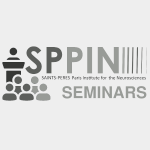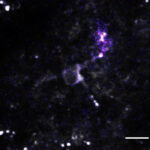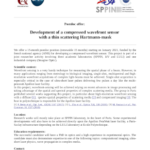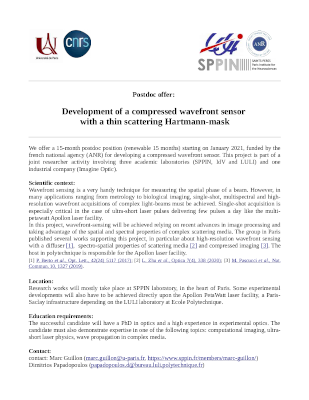News,SPPIN seminars
09/03 – Andreas H. GUSE : Calcium microdomains and NAADP signalling
SPPIN’s webinar winter-spring 2021, 9 Mar. at 10h30, online – Ask link to a SPPIN member.
Andreas H. GUSE, MCU , Professor of Biochemistry, Universitätsklinikum Hamburg-Eppendorf (UKE), Institute for Biochemistry and Molecular Cell Biology, President, European Calcium Society… Continue reading
News,SPPIN seminars
04/03 – Federico TRIGO : Cerebrospinal-Fluid Contacting Neurons in the mouse spinal cord: a sensory or secretory cell?
SPPIN’s webinar winter-spring 2021, UNUSUAL DATE, UNUSUAL TIME – 4 Mar. at 14h00, online – Ask link to a SPPIN member.
Federico TRIGO, Departamento de Neurofisiología Celular y Molecular Instituto de Investigaciones Biológicas Clemente Estable Montevideo, Montevideo, Uruguay

Cerebrospinal… Continue reading
News,SPPIN seminars
16/02 – Frank KIRCHHOFF : impaired bidirectional communication between interneurons and oligodendrocyte precursor cells affects social behaviour
SPPIN’s webinar winter-spring 2021, 16 Feb at 10h30, online – Ask link to a SPPIN member.
Frank KIRCHHOFF, Professor of Molecular Physiology, CIPMM, Saarland University, Faculty of Medicine, Department of Physiology, Homburg, Germany

Cortical neural circuits are complex… Continue reading
News,SPPIN seminars
09/02 – Franck DEBARBIEUX : Dynamic intravital 2P-CARS microscopy to explore the dual face of inflammation in the lesioned spinal cord
SPPIN’s webinar winter-spring 2021, 9 Feb at 10h30, online – Ask link to a SPPIN member.
Franck DEBARBIEUX, MCU , Team IMAPATH, Institut de Neurosciences de la Timone (UMR7289), Marseille, France

To characterize the cascade of inflammatory cellular… Continue reading
News,SPPIN seminars
02/02 – Dongdong LI : Light-sheet imaging of mammalian neuroglia activity
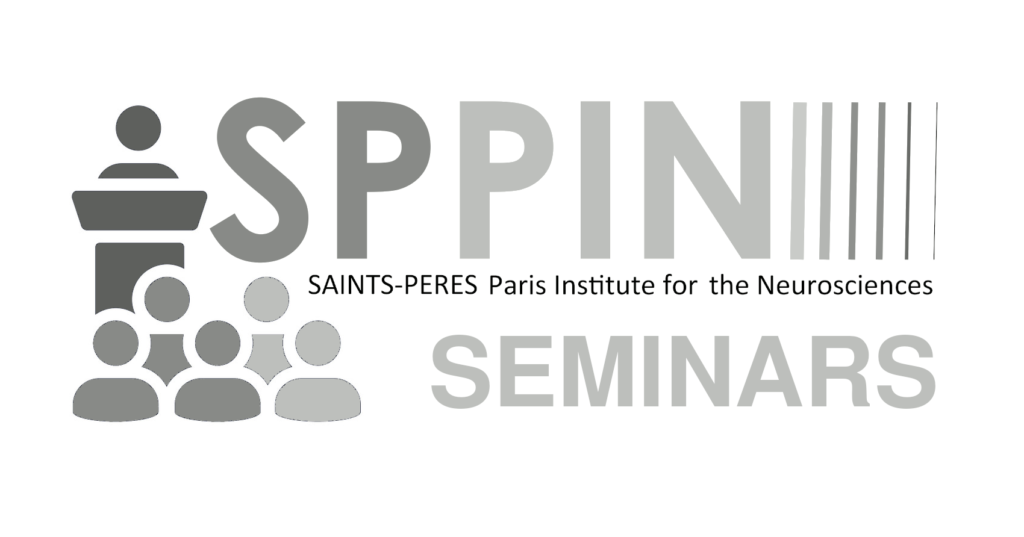
winter-spring 2021, 2 Feb at 10h30, online – Ask link to a SPPIN member.
Dongdong LI – IBPS, Interdisciplinary Institute for NeuroSciences, Bordeaux

Dynamic imaging is an important tool for mapping the spatiotemporal activities in neurons and glial cells… Continue reading
News,SPPIN seminars
26/01 – Etienne Herzog : Probing synapses ex-vivo through synaptosome sorting
winter-spring 2021, 26 Jan at 10h30, online – Ask link to a SPPIN member.
Etienne HERZOG – Interdisciplinary Institute for NeuroSciences, Bordeaux

With an initial training in biotechnologies and molecular genetics, I focus my research on the molecular characterization… Continue reading
News,SPPIN seminars
15/12 – Hervé Rigneault : Multiphoton imaging endoscopy

Tuesday, 15 Dec 2020, 10h30 – Zoom webinar – Ask link to a SPPIN member.
Hervé Rigneault – Institut Fresnel, Marseille
In this talk I will present our recent advances to build flexible probes that are able to perform… Continue reading
News,Publications
Heating, not highly non-linear photo damage is limiting for 920-nm 2-imaging
Unraveling how neural networks process and represent sensory information and how these cellular signals instruct behavioral output is a main goal in neuroscience. Two-photon activation of optogenetic actuators and calcium (Ca 2+) imaging with genetically encoded indicators allow, respectively, the all-optical… Continue reading
News,Opportunities
Open Post-doctoral position at the Saints-Pères Paris Institute for Neurosciences (Université de Paris)
OPEN POSTDOC
Development of a compressed wavefront sensor with a thin scattering Hartmann-mask
We offer a 15-month postdoc position (renewable 15 months) starting on January 2021, funded by the french national agency (ANR) for developing a compressed wavefront sensor. This… Continue reading
News,Opportunities
Open PhD position at the Saints-Pères Paris Institute for Neurosciences (Université de Paris)
OPEN PHD in Zytnicki lab
Title: “Restoration of excitation/inhibition balance to modulate motor neuron degeneration in Amyotrophic Lateral Sclerosis (ALS)“
A PhD position, under the supervision of Daniel Zytnicki, is available in the ‘Motor Neurons and neuromuscular Junctions”… Continue reading

